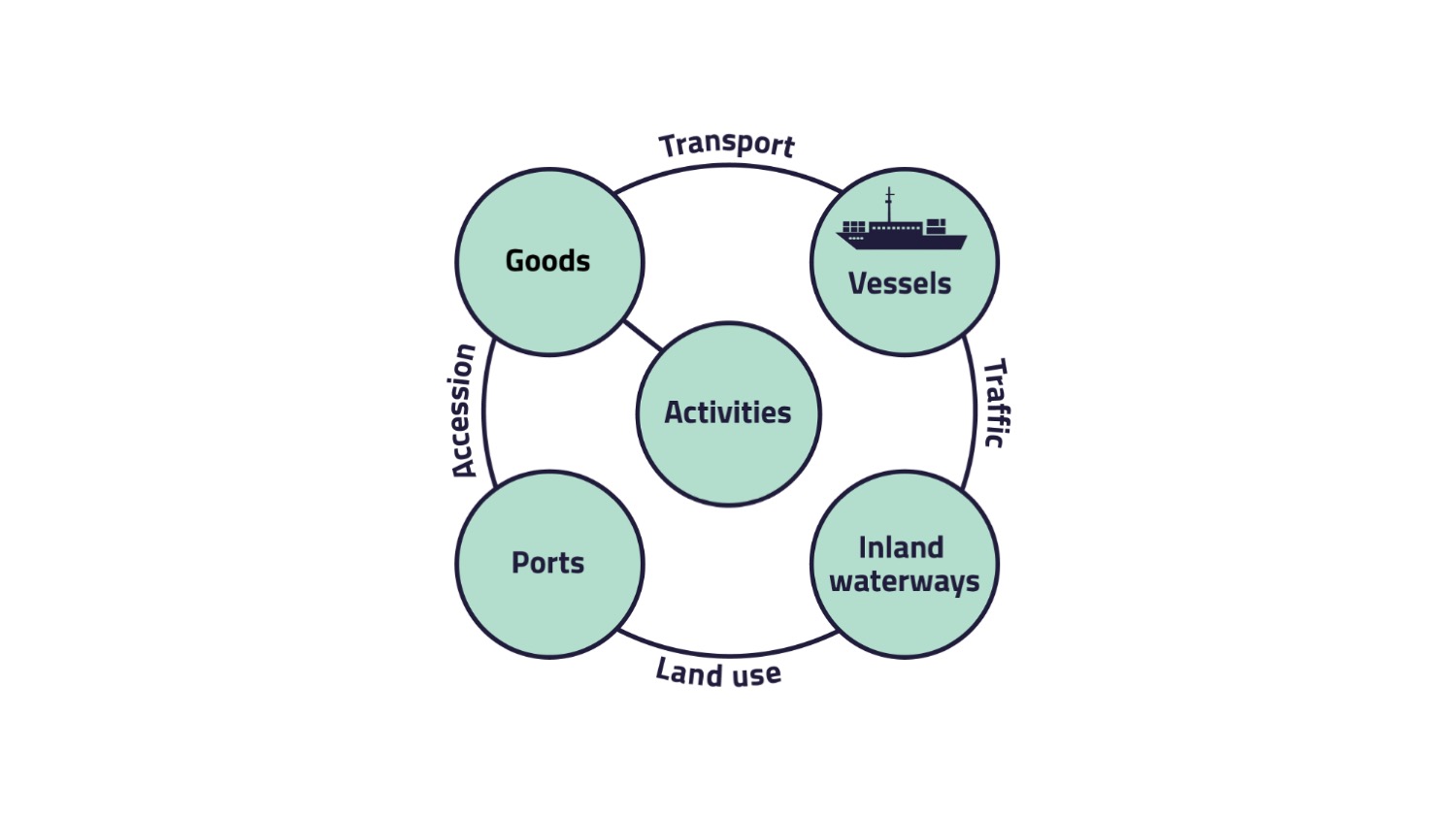Inland Waterway Transport System
Inland Waterway Transport System
In this section you will learn more about the inland waterway transport system and
its different elements goods, vessels, inland waterways and ports.
This topic follows the structure of the conceptual system model of
transport and traffic.
1. Introduction
In this section, you will learn more about the inland waterway transport system. You will get to know the activities that drive this system and the goods that are transported on inland waterways. You will then be introduced to the vessels used for transportation. In addition, the infrastructure of inland waterways and its port facilities will be explained. Finally, the advantages and disadvantages of inland waterway transport will be highlighted.
The section inland waterway transport system is also structured according to the conceptual system model of transport and traffic. For more information about this model, you can have a look at our topic Conceptual System Model of Transport and Traffic. The section Inland Waterway Transport System deals with the goods being transported on inland waterways. Furthermore, we will look at the different types of vessels and describe the inland waterway infrastructure in Germany and the effects of the network structure on expansion, optimization and operation. This section also explains the structure of ports and conducts a SWOT analysis of the ports. In the end, a short summary with the advantages and disadvantages will be given.

Literature